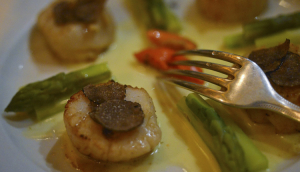XpatAthens
Registered Address Services By WHEN Hub
(includes 3.6% stamp duty; original price: €80/month + 3.6% stamp duty)
-
Mail handling
-
1 locker
-
8 hours/month access to a flex desk
-
Phone booth (up to 2 hours/month)
-
Meeting room (1 hour/month)
(includes 3.6% stamp duty; original price: €225 + €80/month with 15% discount)
-
Mail handling
-
1 locker
-
Unlimited monthly access to flex desk
-
Phone booth (up to 20 hours/month)
-
Meeting room (10 hours/month)
Why Choose WHEN Hub?
-
Email: hub@when.org.gr
-
Phone: 211 218 1642 / +30 211 218 1643
-
Address: 29 Sokratous Street, 10552 Athens, Greece
Karditsa Prefecture
One usually thinks of Greece as an archipelago of a lot of islands. Yet, Karditsa can surprise its visitors with mountain landscapes as dramatic as one can see in the Alps, just one of many places of incomparable beauty in this region. Lake Plastiras, lying in the magnificent valley of the Agrafa Massif, welcomes its visitors with hotels and hostels designed to merge with the natural environments, and also equipped to satisfy even the most demanding clientele.
Here you will be able to enjoy thoroughly unspoiled landscapes that have only recently attracted the attention of international Nature lovers.
Along the lakeside road, a series of pavilions and small shops invite visitors to savor the exquisite traditional tastes and fragrances of the region’s particular delicacies. Locally produced pastry and confections, wine, and other specialties await to introduce the traveler to the real joys of Karditsa Prefecture.
One occasion you would not want to miss is the Carnival manifestations in Sofades, a few kilometers away from the capital of the Prefecture. They take place in the beginning of spring, and they signal the end of winter, still visible in the snow-capped mountains and hills in the distance.
The lightheartedness of time is reflected in the morning smile of the lake. Now, the excursions in the region's lower mountains, to a series of breathtaking sites centered on Plastiras Lake or in the Town of Karditsa, are a real enjoyment; from historic Ellinopyrgos to the cool Kanalia and Fanari, where the well-preserved old castle dominates the plain below. Another trip, a short ten kilometers from Karditsa Town, brings us to Aghios Athanassios hill, where we can see the remains of the Byzantine castle, now ruined, built with the stones of the ancient acropolis of Kalithiros, known from Hellenistic times (3rd to 1st centuries B.C.). On our way back, Aghios Georgios Village and its church are worth a visit.
To read more, please visit windmillstravel.com
Greece To Try For Loan Extension From Eurozone
Greece is set to submit Wednesday to the Eurogroup a request for a six-month extension to its loan agreement with its creditors, sources close to the negotiations between Athens and the eurozone told Kathimerini Tuesday.
While the request from Athens could help the two sides overcome the impasse reached at Monday’s Eurogroup, the fact that Greece will purportedly ask to extend its loan agreement rather than its program could lead to complications.
The Greek side is apparently willing to agree to a moratorium on any steps that could affect the country’s fiscal targets and is ready to discuss other measures but is not willing to adopt the terms of the existing bailout. The proposal is due to be sent to Eurogroup chief Jeroen Dijsselbloem this morning and the Dutch finance minister will decide if it merits calling an extraordinary meeting of eurozone finance chiefs for Friday.
A European Union official told Kathimerini’s Brussels correspondent Eleni Varvitsioti that the problem with Greece asking for an extension of its loan agreement and not the terms that come with it may create problems in parliaments such as Germany’s, which have to approve the prolongation of the agreement.
To read more, please visit ekathimerini.com
Spring Sales In Athens: May 2 - 9
Happy shopping!!
Rhodes To Host Tripadvisors Destination Academy Europe
August 14 - It's Holiday Time Across Greece
Remember to stay connected with us through our weekly newsletter, Facebook, and Twitter!
Mr. Ioannis Douliotis - MBBS MRCOG Consultant Obstetrician, Gynaecological Minimal Access Surgeon & Infertility Specialist
The Doctor is a regular member of the Royal College of Obstetricians & Gynecologists of England (MRCOG). He is also a member of the British Fertility Society (BFS).
He is a scientific associate of Serum IVF Clinic In Athens and an Honorary Consultant of Concept Fertility Unit IVF in London.
He graduated from the Medical School of the University of Athens in 2002. After completing his rural service and fulfilling his military duties in Alexandroupoli, in 2006 he moved to the UK for his specialisation, where he worked for some of the busiest University Hospitals in the UK (NHS) such as Kings College Hospital, Royal Free Hospital, St. Georges Hospital and St Heliers Hospital.
In 2014, after international examinations, he was admitted as a member of the Royal College of Obstetricians and Gynecologists of England (MRCOG). This title is internationally recognized and is highly regarded.
He has dealt extensively with medical research on stem cells / umbilical cord blood and the effect of obesity on reproduction. In his professional career he has published a significant number of scientific articles in international medical journals and has presented his work at global conferences such as the European Society of Human Reproduction and Embryology (ESHRE) and the British Fertility Society (BFS).
During the last years of his stay in London, he worked extensively and gained vast experience in assisted reproduction and preservation of fertility for cancer patients, as well as in "social" cryopreservation of genetic material (embryo - oocytes - ovarian tissue). He specialises in treating cases with low ovarian reserve and repeated miscarriages and implantation failures. For selected cases in vitro fertilisation (IVF) in a natural cycle or mild stimulation is suggested.
During his stay in the United Kingdom, he gained extensive experience in specialised laparoscopic and hysteroscopic surgery, along side the well-known Laparoscopic surgeon James English.
The most frequently performed surgeries are: hysteroscopic removal of polyps / fibroids, adhesiolysis (Asherman's syndrome), laparoscopic removal of cysts, ovaries, fallopian tubes, endometriosis and laparoscopic total hysterectomy.
Mr. Douliotis is also experienced in cosmetic gynaecological surgery such as labioplasty and hymenorrhaphy for selected cases.
In 2016 he returned to Greece in order to live and work in his birthplace, having gained valuable international experience that enables him to deal with the majority of obstetric and gynecological cases successfully.
Classic French Dining At L’Abreuvoir
Telephone: 21 0722 9106
Price Point: $$$$
Dress Code: Smart
Know a great restaurant? Share your review with us!
June 4 - Summertime In Athens
XpatAthens Welcomes OMILO As An Official Content Contributor
We are always looking to meet and connect with new content contributors. If you believe that your content would be a positive addition to XpatAthens, click here to learn more about working with us!
We are very happy to welcome OMILO
as an official XpatAthens content contributor.
About OMILO
Omilo Greek Language and Culture inspires people from all over the world to learn Greek, while exploring Greece. They offer 1- and 2-week courses for adults that combine beautiful course locations, experienced teachers, and a balanced combination of Greek classes with cultural activities. All these make Omilo a place where people enjoy learning modern Greek and have fun.
Besides the courses, Omilo also creates online publications to help adults expand their language skills through Language Books and eBooks for different language levels.














